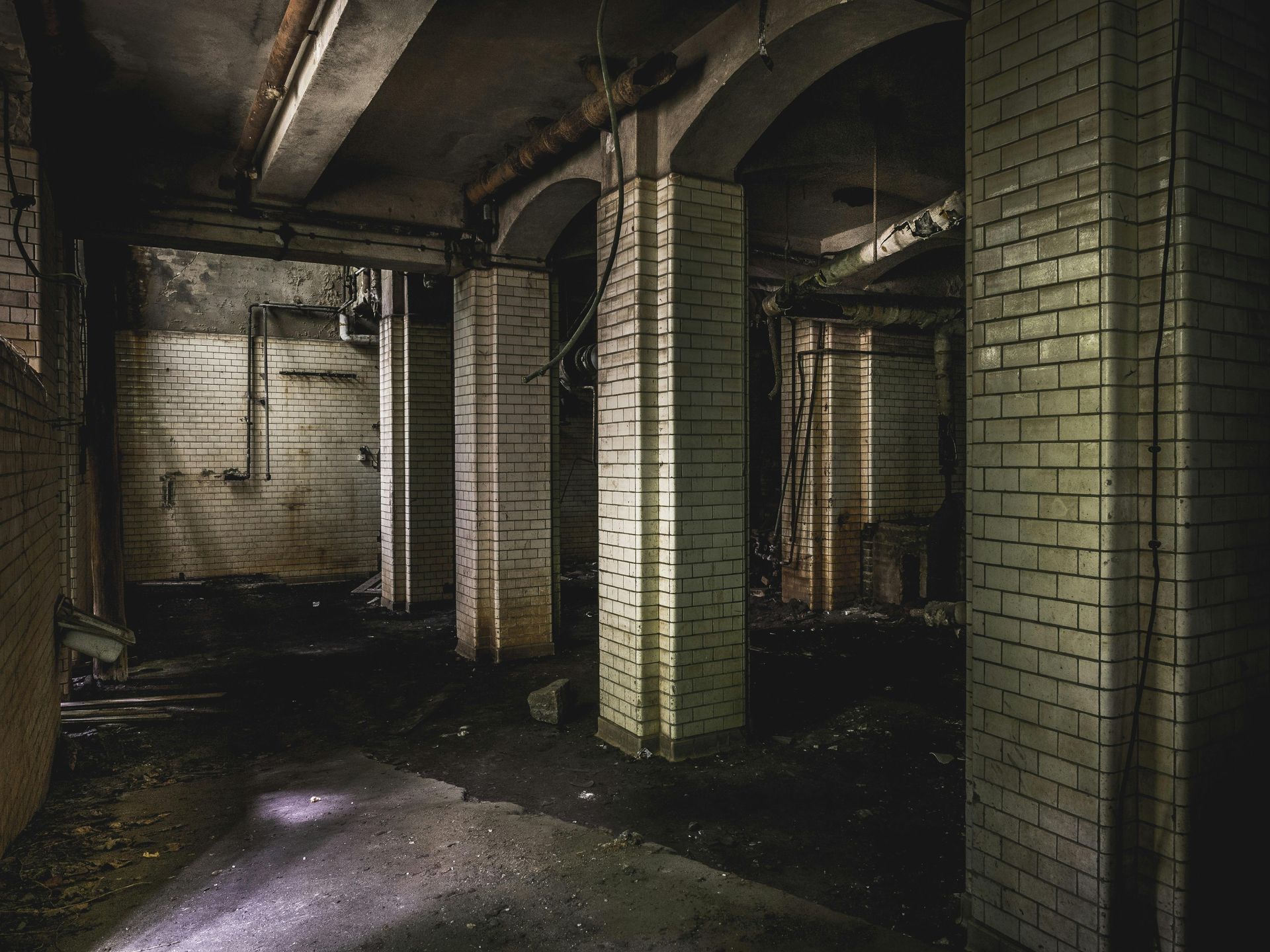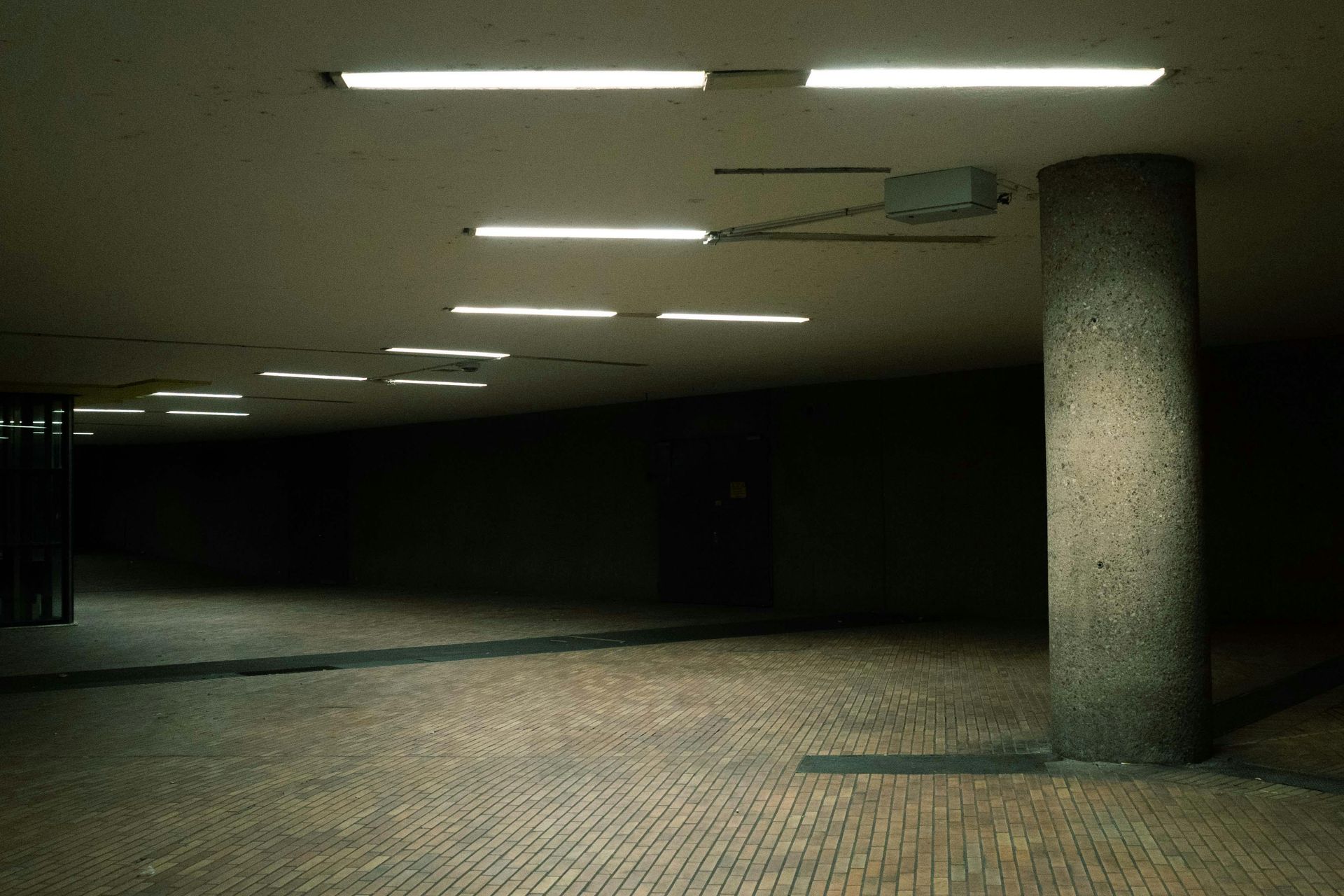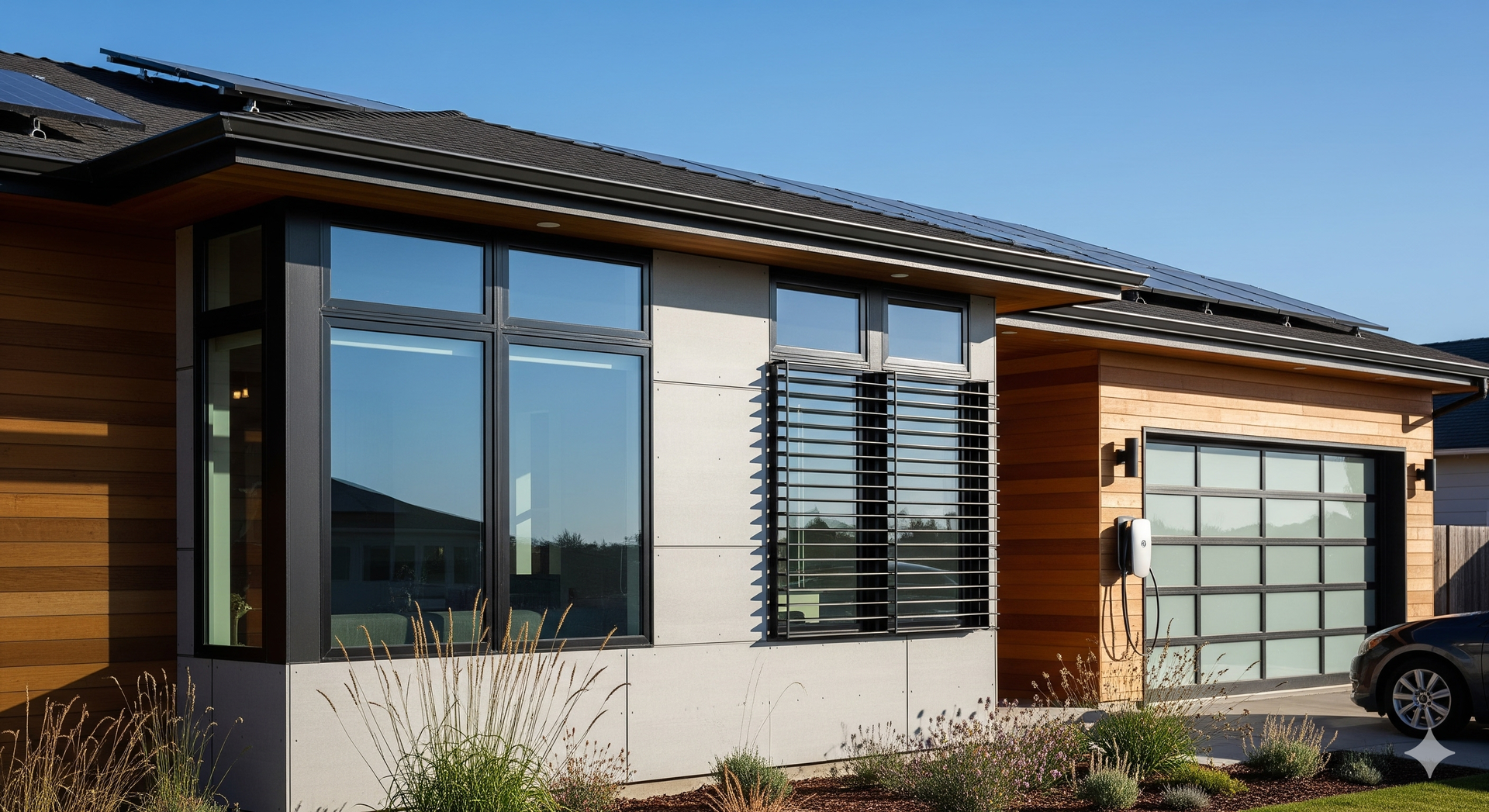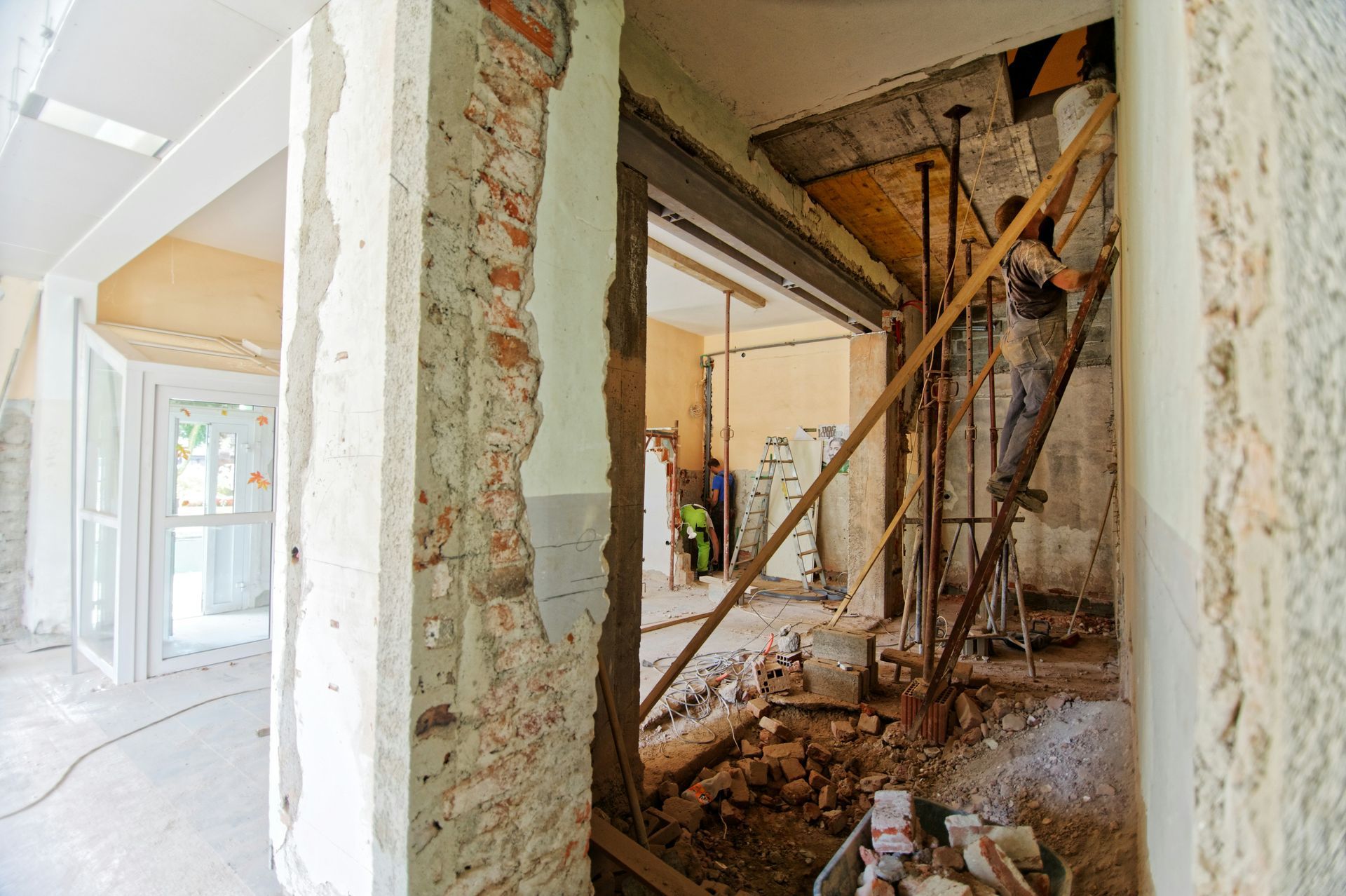Signs Your Roof Needs Repair Before Storm Season Hits Indiana
Indiana is no stranger to powerful storms. If your roof already suffers from minor issues, storm season can quickly turn small problems into major headaches. Professional services help address problem areas before severe weather arrives, preventing expensive damage and ensuring the safety of your family.
Knowing how to prepare your roof for storm season ensures your home can stand up to the harshest weather around the Indianapolis area. This guide explains the key signs your roof may need repairs, how to get ready for storm season, and when it’s time to call in a professional.
Key Takeaways
- Minor roof problems can quickly turn into major damage during Indiana’s storm season.
- Missing shingles, sagging sections, and water stains are early warning signs.
- Regular roof inspections help catch problems before storms make them worse.
- Clearing gutters, trimming tree branches, and checking attic ventilation protect your roof.
- Leave major repairs and structural issues to licensed professionals for safety and quality.
- Staying prepared before storm season can save money, time, and protect your home.
Why Timely Roof Repairs Matter in Storm Season
Your roof is a critical shield against nature’s elements. When a storm arrives, its intense winds and pounding rain can exploit even the smallest vulnerabilities. A single missing shingle or a small leak can rapidly escalate into severe water damage, structural issues, and expensive emergency repairs. That is why you also need experts that specialize in insurance claim repairs.
Roof failures during storms pose real safety risks. Water intrusion can damage insulation, cause mold growth, and weaken support beams. In worst-case scenarios, parts of your roof could collapse under extreme weather stress. Indiana’s climate makes timely roof maintenance essential. Storm season often brings:
- Strong thunderstorms with high winds
- Hail damage
- Heavy rainfall leading to flooding
- Tornado risks in certain areas
If your roof is already compromised, these forces can quickly overwhelm it. Addressing minor repairs before storm season helps avoid emergency fixes when contractors are busy, supplies are scarce, and prices surge.
Common Signs Your Roof Needs Repair
Identifying roof issues before they worsen is key to avoiding storm-season disasters. It’s a long-term solution that will benefit
home remodeling in the long run. Here’s how to spot trouble early. Below is a table summarizing the
most common signs that your roof needs attention, and what each one might mean:
| Sign | Possible Cause | Why It Matters |
|---|---|---|
| Missing or damaged shingles | Wind damage, aging materials | Exposes underlayment and decking to moisture |
| Sagging roof sections | Structural damage, water saturation | Indicates severe internal damage |
| Water stains on ceilings/attic | Roof leaks, poor flashing, clogged gutters | Signals water intrusion needing immediate repair |
| Granules in gutters | Aging shingles shedding protective layer | Loss of UV protection and waterproofing |
| Moss, mold, or algae growth | Trapped moisture, poor drainage | Leads to decay and compromised materials |
How to Prepare Your Roof for Storm Season
Understanding how to prepare your roof for storm season can make the difference between a safe home and an emergency repair bill. While some tasks are DIY-friendly, others require professional help. Here’s how to ensure your roof is ready for Indiana’s turbulent weather.
Schedule a Professional Roof Inspection
Start by arranging a thorough inspection with a licensed roofing contractor. Professionals can detect subtle problems such as soft spots in the decking, loose flashing around chimneys and vents, tiny cracks in shingles, and sealant deterioration. A professional assessment gives you a complete understanding of your roof’s condition and clear recommendations for any needed repairs.
Inspect Your Roof From the Ground
Since climbing onto the roof is unsafe for most homeowners, perform a visual check from the ground. Look for curled or missing shingles, damaged flashing, sagging roof lines, and any debris accumulation. Binoculars can help you examine hard-to-see areas safely without risking injury.
Clear Gutters and Downspouts
Clogged gutters cause water overflow that damages roofing materials and walls. Before storm season arrives, remove leaves and debris from your gutters, flush the downspouts with water, and check for leaks or rust spots. Keeping your drainage system clear helps prevent water from pooling on your roof and causing costly problems.
Trim Overhanging Branches
Strong winds can snap branches, sending them crashing onto your roof. Cut back any tree limbs that hang over your home to reduce this risk. Removing excess shade also helps prevent moss and algae growth.
Check Attic Ventilation and Insulation
Proper attic ventilation prevents moisture buildup under your roof, which can weaken materials and cause mold. Inspect your attic for blockages in vent openings, ensure insulation levels are adequate to reduce ice dam risks in winter, and look for signs of water leaks or pests. Maintaining healthy airflow helps protect your roof throughout the year.
Reinforce Roof Components
Talk with your contractor about reinforcing vulnerable areas of your roof. This can involve securing loose flashing, re-sealing skylights, installing hurricane clips on trusses, or adding roof sealants. These improvements help strengthen your roof and protect it from high winds and heavy rain during storm season.
When to Call a Roofing Professional
While homeowners can tackle basic maintenance, certain problems demand professional expertise. Call a roofing contractor immediately if you notice:
- Significant roof sagging
- Persistent leaks
- Extensive shingle damage
- Structural damage after a storm
Experts have the tools and safety equipment to handle repairs properly. Attempting to fix major problems yourself can lead to injuries or worsen the damage. Investing in professional help may seem costly upfront, but it saves money long-term by preventing extensive repairs or premature roof replacement.
Frequently Asked Questions
What are the most common signs of roof damage before storm season?
Missing shingles, sagging areas, water stains on ceilings, granules in gutters, and moss or algae growth all indicate potential roof problems.
How can I safely inspect my roof for storm preparation?
Conduct a visual inspection from the ground using binoculars. Avoid climbing on your roof without proper safety training.
Why is it important to repair minor roof issues before storms hit?
Small issues can quickly become severe under storm conditions, leading to leaks, structural damage, and costly emergency repairs.
Should I handle roof repairs myself or hire a professional?
Minor maintenance like clearing gutters is safe for homeowners, but significant repairs or structural issues should always be handled by licensed roofing professionals.
How often should I check my roof to prepare for Indiana’s storm season?
Inspect your roof at least twice a year—once before storm season and once afterward—to catch damage early and keep your home protected.
Final Thoughts
Indiana’s storm season brings powerful weather capable of testing any roof’s durability. Addressing repairs now means fewer surprises when heavy winds and rain arrive. Knowing the signs of roof trouble and how to prepare your roof for storm season keeps your home safe and your family protected.Indiana’s storm season brings powerful weather capable of testing any roof’s durability. Addressing repairs now means fewer surprises when heavy winds and rain arrive. Knowing the signs of roof trouble and how to prepare your roof for storm season keeps your home safe and your family protected.
If you’re ready to secure your home against the storms ahead,
contact Main Street Contractors for expert inspections, repairs, and trusted service that keeps your roof strong when it matters most.











